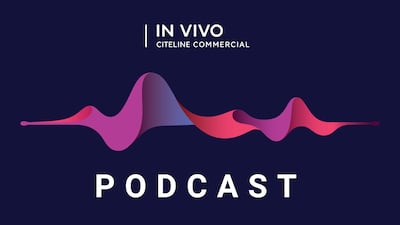2023 saw the biopharmaceutical industry spend a record $300bn on R&D activities, reinvesting approximately 30% of prescription revenues to secure the next generation of therapies. Yet, recent weeks have seen falling valuations and stark anecdotes from contract research organizations as their main client base – large pharma companies – have tightened the belt on early research.
A prolonged period of inflation and raised cost of capital has challenged research-based companies and their investors placing decade-long bets into new drugs. Biopharma executives are navigating new pricing controls, which commentators suggest will curb new drug discovery. And artificial intelligence has crossed into the mainstream, with promises of productivity gains throughout the drug lifecycle helping to stretch finite R&D budgets further. With the combination of these factors, perhaps we are arriving at an inflection point.
Pharma must learn to do more with less, leaning into strategies and technologies that increase efficiency and lower costs while still delivering meaningful innovation to patients and the wider healthcare ecosystem.
R&D Budgets Stretched
Pharma’s $300bn spend in 2023 is remarkable for two reasons. It represents a 50% increase from pre-pandemic days, as well as a recent record when calibrated against prescription revenues. The industry is facing a well-publicized patent cliff as numerous key products face the end of their lifecycle, necessitating a period of renewal. The response so far has been to bet on science and reinvest heavily into R&D, funneling more than 30% back into the next generation of therapies. However, recent history tells us that such spending cannot be maintained indefinitely, even as revenues rise.
Evaluate’s recent World Preview 2024 report suggests that spending will moderate to 22% of total revenues by the end of the decade. Profit warnings from CDMOs are an indicator that this shift has already begun with the early pipeline.
Business Development To The Fore
R&D is one route to create value, although pharma companies are experienced deal-makers and pipelines are now around 50% outsourced. If R&D spend slows, then a compensatory measure could be to reallocate capital to business development. After all, small and mid-size biotechs are discovering an increasingly share of new drugs and can do so with the tremendous efficiency of platform technologies. Such companies are fertile ground for drug development alliances. The proportion of in-licensed assets could begin to exceed 50% as pharma companies turn to external innovation.
The chart below, taken from a Citeline study into pharma spending patterns, provides a baseline for the past decade of investment. Generally speaking, those companies with higher expenditure on R&D versus business development are the better positioned today. However, this is not a cause-and-effect relationship and there are a plethora of breakthrough therapies to unearth from the pipeline through deal-making.
Differentiating Through Strategy And Technology
Of course, strategy around R&D spending versus deal-making is not a zero-sum game, and some companies have been much more effective than others at creating value. The most successful companies today may have tilted slightly towards internal R&D spend, but their total spend has also been modest relative to peers. There is a lesson here that smaller budgets can help to focus corporate strategy and prioritize investments where a company has a clear right-to-win. With larger R&D budgets comes greater possibilities, but also the potential for bloating and inefficiency. As successful companies earn the right to reinvest more capital into their business via R&D or deal-making, they must do so judiciously.
At the industry-wide level, the focus on productivity and efficiency is as important as ever. Drug development costs cannot continue to balloon, therefore we must harness new tools that lower costs, expedite timelines, and improve success rates. The investment case for both R&D and deal-making improves considerably if better drugs can be brought to market quickly and with a higher degree of certainty.






